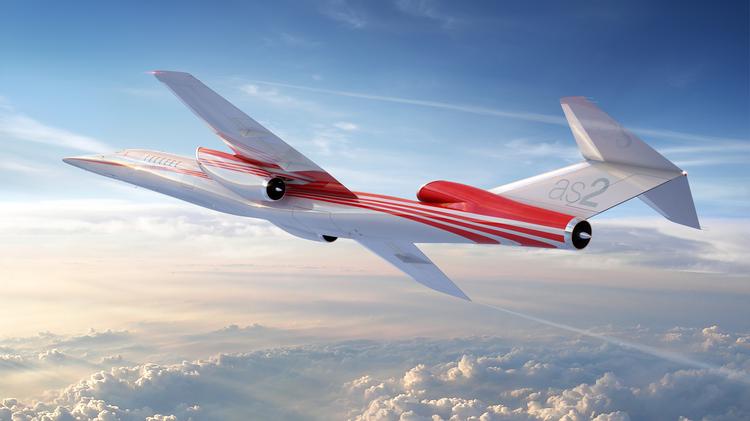The return of supersonic commercial airplanes
Let’s face it; even with a plane, it takes too long to travel from one point to another on the earth’s surface. I often fly between New York City in the USA and Seoul in South Korea, making the trip at least once in a few months. If I fly via the Pacific Ocean route; […]

Let’s face it; even with a plane, it takes too long to travel from one point to another on the earth’s surface. I often fly between New York City in the USA and Seoul in South Korea, making the trip at least once in a few months. If I fly via the Pacific Ocean route; that is, from New York City over Alaska and Japan, and then into Seoul; it takes about 14 hours for nonstop travel. Going via Europe would take about 18 hours for a straight flight, except that no airline flies the route nonstop; you have to lay-over somewhere, somewhat. In fact, I made the transpacific trip barely a week ago. Not only does one suffer the “jetlag” that results from the 13-hour time difference between New York and Seoul at this time of the year, you also have to endure the long travel time. Air travel does take time. Traveling from New York City to Abuja nonstop takes over 10 hours.
The problem is that commercial airplanes travel at the speed of snail – very slow, merely at 900 kilometers per hour, compared to what is needed to get you to your destination on time.
Obviously, this is all about perspective. I heard stories from my father of how they used to commute between Kabba and Onitsha, to trade, on foot, perhaps about 80 or so years ago. It must have taken several days to make a one-way trip, though by the time I knew myself – which is almost sixty years ago – there were lorries, mostly owned by my uncle, that plied the route and lessened quite a bit the burden of making this trip, taking between 5 and 8 hours; not three days. That is obviously some progress. Moreover, today, the same route would require less than 40 minutes by air, except that there is no longer an airstrip in Kabba. (There used to be one in the early sixties, but that is now gone.)
So can planes go much faster than 900 kilometers per hour? Certainly; but usually these are military planes. These planes can break the sound barrier; that is, they travel faster than the speed of sound, which is roughly 1059 kilometers per hour under cruise conditions. Any vehicle that travels faster than the speed of sound is said to move at a supersonic speed. Flying at subsonic and sonic speeds involves speeds that are significantly less than, and comparable, respectively, to the speed of sound. A flight at speeds greater than five times the speed of sound is usually referred to as a hypersonic flight. A parameter that relates the speed of motion of an object to the speed of sound in a similar environment is referred to as the Mach number. So, a Mach number of unity for an object in motion means that the object is going at the speed of sound. A Mach number of 2 implies that an object is twice as fast as the speed of sound. Of course, a Mach number of zero means that an object is not moving at all. The numbers given above suggest that a typical Mach number for commercial flight is approximately equal to 0.85, from 900 divided by 1059.
There used to be a commercial plane that flew at supersonic speeds. The vehicle, called Concorde, was a project between France and United Kingdom. The Concorde flew at approximately 2030 kilometers per hour under cruise conditions at an altitude of approximately 18.3 kilometers. The Mach number under this condition is roughly 2.02. In comparison, regular commercial airplanes fly at an altitude of approximately 11.5 kilometers. So, the Concorde is twice as fast as your regular airplane, meaning that it would have taken under 3 hours to travel from London to Abuja, and under 7 hours for my example of transpacific travel. However, the Concorde was killed 16 years ago because it became uneconomical to run and also because of the excessive airport noise and the sonic boom generated by the vehicle.
However, with new design breakthroughs and lessons learned building the X-59 low-boom demonstrator for NASA, Lockheed Martin, a prime contractor for the US military, has unveiled the details of a Mach 1.8 concept supersonic commercial vehicle capable of transpacific routes, and designed for 40 passengers. According to Aviation Week and Space Technology (AWST), this vehicle is targeted for first flight in 2021 – or two years from now. The supersonic transport (SST) vehicle, as it is called, has a sharply-swept delta-wing; it is 225 ft. long, with a span of 73 ft., making it much longer than the Concorde but narrower span-wise. The AWST states that “almost 70 ft. of the overall length is made up of the nose section, while the cabin occupies the central 78-ft. section of the fuselage.” The SST has two engines which are mounted on the tail. They put out 40,000 lb. of thrust.
With the SST, your travel time from Abuja to Dubai will almost be cut in half, although it might cost you a bit more to travel. This is obviously a vehicle intended for those who value their time and comfort more than their money – so to speak.
